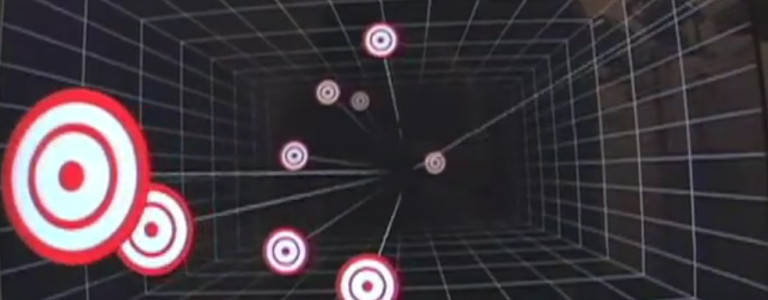Hey all,
I keep dying in Dungeons of Dredmor.
In other news, one of my co-workers tossed me the link to an interesting YouTube video earlier today. A man by the name of Johnny Lee demonstrates the head tracking technique to make his TV behave like a frame rather than a screen.
He does this by attaching his Wii’s sensor to a hat while leaving the Wiimote itself sitting by his TV. Then, using the magic of computers, he can have a program adjust the image that it is being displayed based on the relative position of the user. When he moves to one side, the screen changes so that it is as if he is viewing the scene from that angle. Check out the full video:
My favorite moment in the entire video is the expression that Lee makes as he puts on his glasses at 3:53. It is clearly his “serious business” face.
It’s a bit of a weird effect to see the targets as they appear to come out of the screen. When I first saw this, my mind instantly started going over the possibilities that this would bring to gaming. Heck, the video is from way back in 2007, so it’s possible that many games or hardware has come out and would use this or similar technology, but I’ve been so focused on traditional games it’s possible that I’ve missed it entirely. I know that the Kinect uses some body motion, but I haven’t had the opportunity to get one and play around with it.
I feel like I might be missing a revolution in gaming! I think over the coming months I’m going to investigate more cool user interface options more fully.
So what exactly could this bring to gaming? Well, the obvious downside is that it only works for the person playing the game; everyone else just sees the screen going a bit wacky. That is not to mention the additional cost of the hardware itself, and whatever discomfort or annoyance wearing the glasses adds as well.
If these obstacles could be lessened or removed completely, it would add an extra level of immersion that the traditional screen experience can’t match. Plus, let’s be honest here, who out there hasn’t leaned over to try to peer around a corner, or held their controller askew while making a tight turn in a racing game? By rewarding the player for it, the game designer could strengthen the relationship between the player’s entire body and the game, providing more of a full-body experience.
That isn’t to say that it would add a lot to every single game. Any game with a relatively static board or screen (such as Tetris or Peggle) wouldn’t get much of a benefit from this technology.However, I can see it being used in first-person adventure games (hiding clues around objects), shooters (aforementioned leaning around corners), racing games, and other simulation games (looking around the cockpit, such as the Mechwarrior series).
Overall, it looks like an interesting technology, to say the least. I’m going to try to investigate this and other technologies similar to it and ponder some more of the benefits and drawbacks in the coming months.
Cheers,
S

Comments